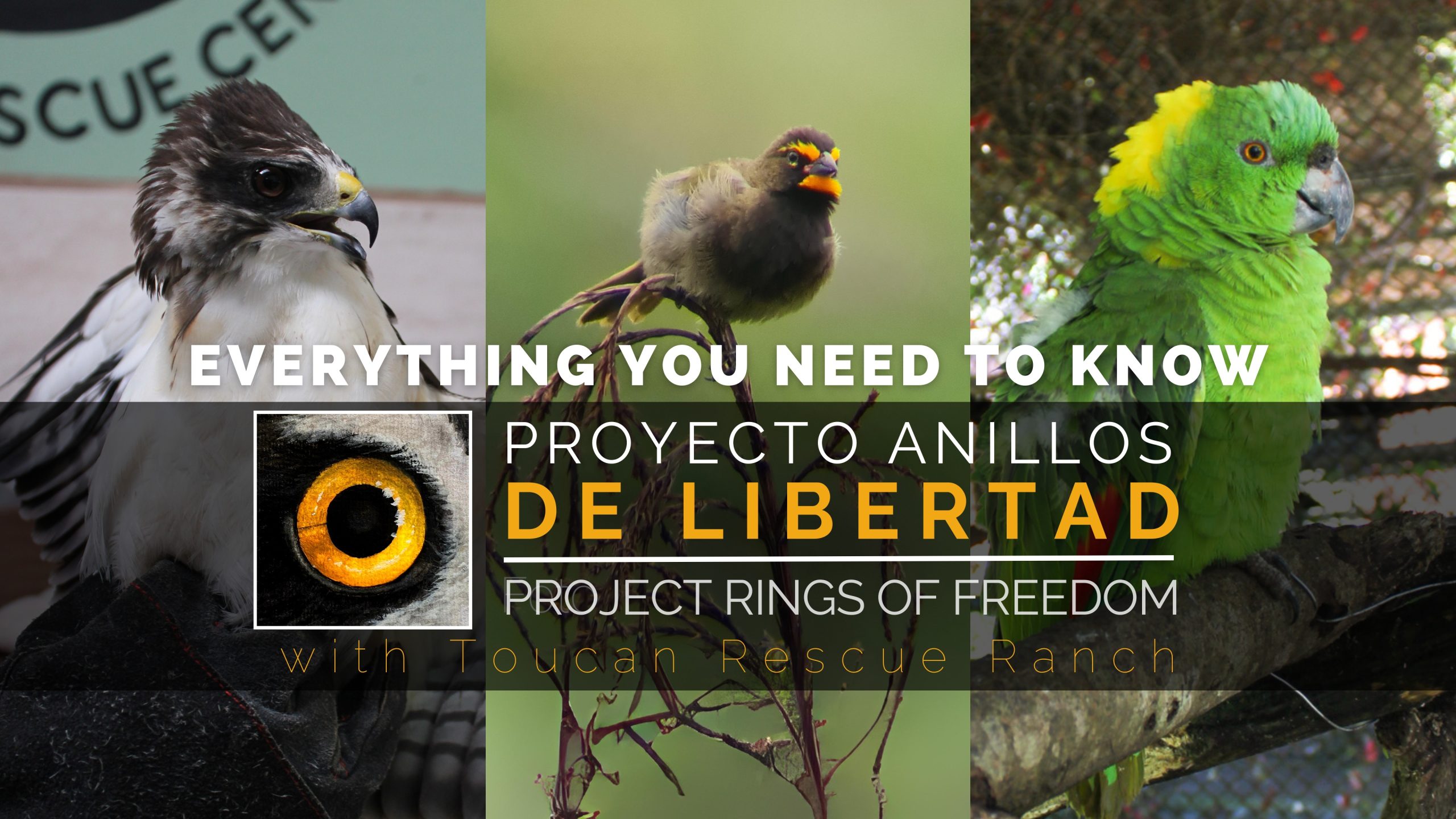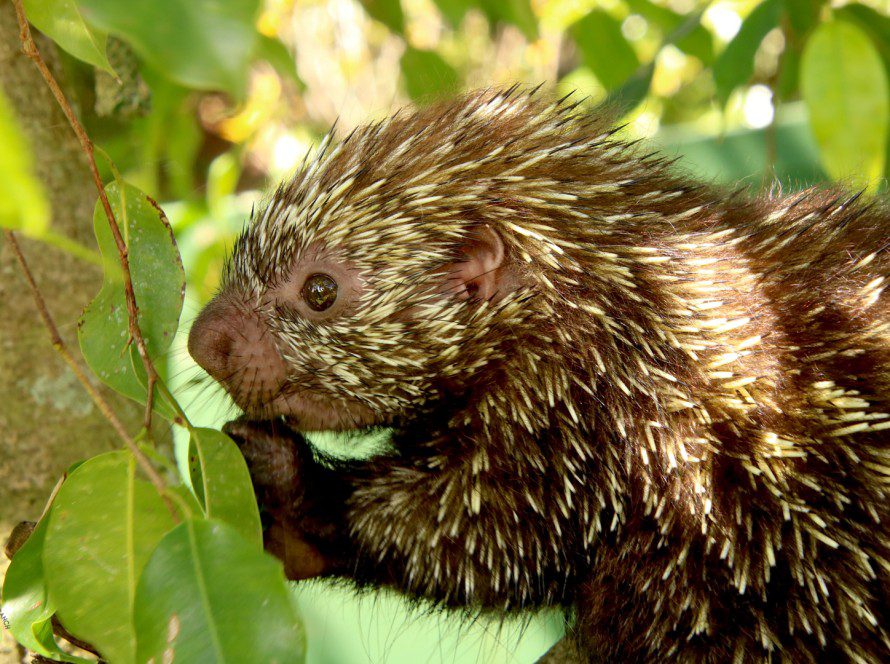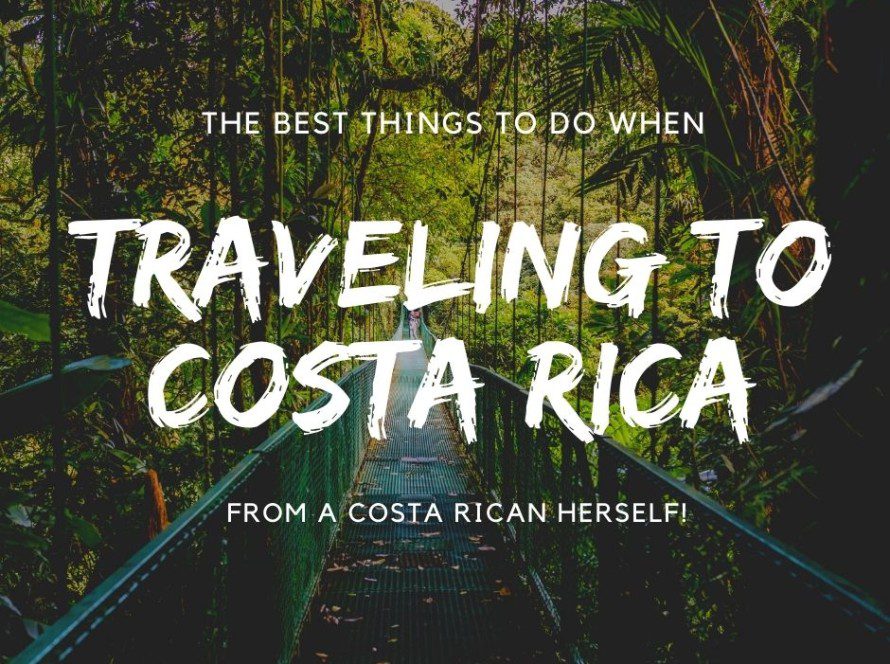Toucan Rescue Ranch has a rich legacy of rescuing, rehabilitating, and rewilding the wildlife of Costa Rica, starting with the toucans, parrots, and birds of prey that exclusively made up our intake in the early years.
Now, our programs have expanded to include sloths, cats, mustelids, marsupials, and everything in between. With so much exciting change and constant evolution, it can be easy to forget where we started. In some ways, the birds had taken the backseat to the sloths and other mammals we specialize in, but we decided it was time for them to reclaim the spotlight.
Birds make up a huge part of our yearly clinic intake and are the most numerous residents in our Sanctuary here at Toucan Rescue Ranch. With our feathered friends in the majority, we decided it was time to prioritize and improve their care protocols. Thus, the idea for Anillos de Libertad was born!
Anillos de Libertad will focus on improving the record-keeping methods for the birds in our care, both permanent residents and patients in our clinic. With this, we will also be able to better monitor former patients post-release as well. The initial effort of this new project will focus on reestablishing our bird banding program.
🪶Stories Behind the Feathers
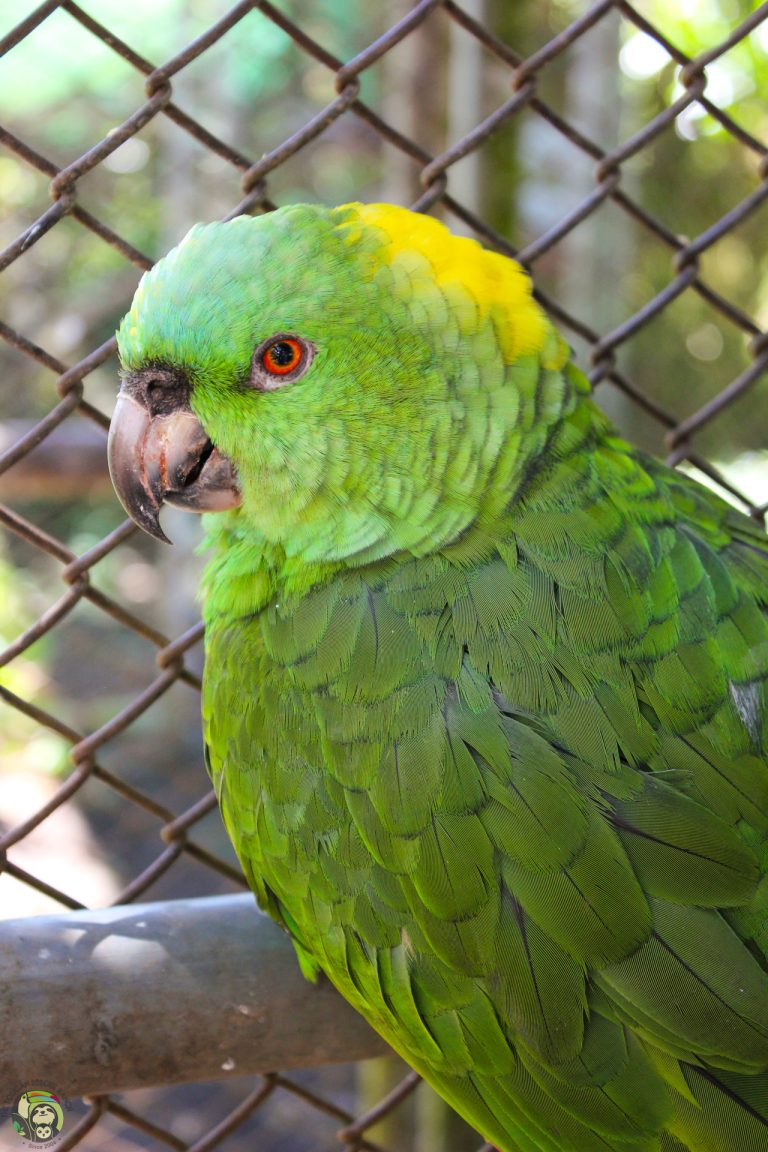
LUPITA
Meet Lupita, one of the many yellow-naped amazons who live as permanent residents in our Sanctuary.
MINAE brought Lupita to us after she was discovered in someone’s house in San Jose, far from her forest home. She had been kept as a pet for 40 YEARS in a rusty metal cage, surviving off of coffee, seeds, and bread. She arrived to us malnourished and will remain with us for the rest of her life in our parrot retirement program called Parrot Oasis.
Lupita’s story is not unique. Yellow-naped parrots, or amazons, are among the most critically endangered bird species in Costa Rica, and the main factor in their decline has been poaching for the illegal wildlife trade. Many seek out this colorful species as pets due to their great ability to mimic human speech and vocalizations.
Wildlife rescue centers in Costa Rica are flooded with these critically endangered birds, deemed nonreleasable due to their habituation to humans. Amazon parrots like Lupita are often the most abundant species found in rescue centers, as well as the most expensive to care for. Our own Sanctuary currently cares for over 40 of these beautiful birds, each with their own unique set of chronic health issues stemming from old age, as well as from the poor diets and inadequate care they received in their previous lives as pets.
CHILOÉ
Meet Chiloé, the short-tailed hawk who came to us after an unfortunate incident with a human and a pellet gun.
He was found unable to fly in someone’s garden, and it was reported that he had been there for days. His body score was low upon arrival, as he had been unable to feed himself during this time. Had he not been rescued, he surely would have perished.
His initial checkup revealed a fracture in his wing, but our Vet Team was suspicious as to its cause. Sure enough, x-rays revealed a bullet lodged in his carpus. While we do not know the exact details, we can only assume Chiloé was caught in the crosshairs of an angry farmer or a careless teenager.
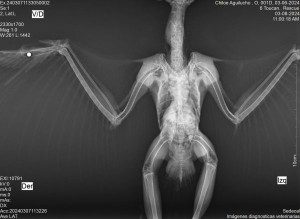
The pellet was removed after a quick surgery, but it would be a long road to recovery for the resilient hawk. The fracture would first need to heal before he could begin to relearn how to hunt and fly. Luckily he has all the time he needs in one of our rehabilitation flight enclosures. Here, he has the space to practice short flights to regain his strength and we will be able to give him enrichment to get him hunting again.
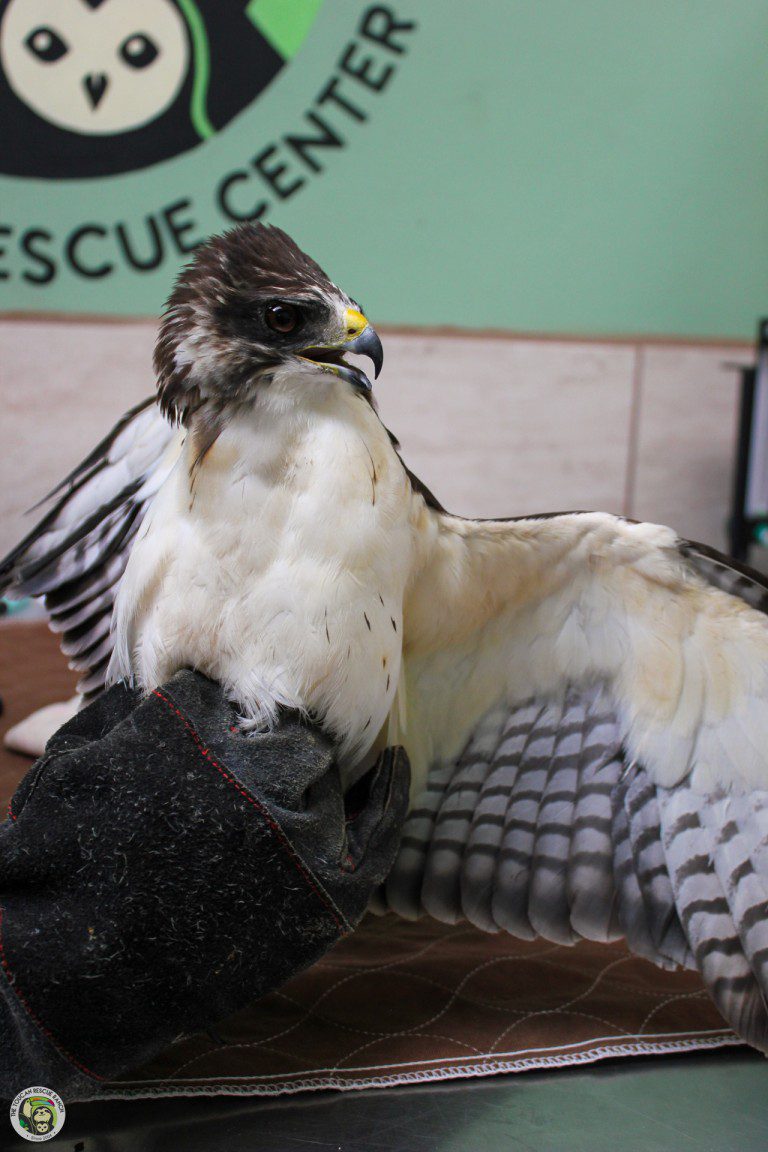
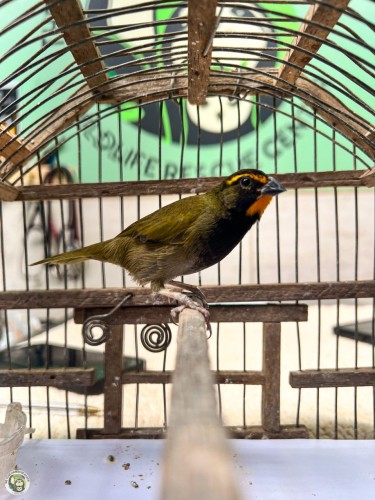
SINATRA
Meet Sinatra, a tiny but fearsome songbird species known as the yellow-faced grassquit.
Yellow-faced grassquits are another of the most frequently confiscated bird species from the illegal pet trade here in Costa Rica. Sinatra’s story is no different than the rest.
Sinatra came to us after he was confiscated by MINAE from a tiny cage on someone’s porch. This is the unfortunate fate of many male yellow-faced grassquits in Costa Rica. They are especially sought after for their beautiful song and their aggressive nature, which is something songbird hunters use to their advantage to capture more of this species.
Luckily, Sinatra was in good health and ready to go back to his wild home. After only a few weeks in our care to allow him to regrow some flight feathers, Sinatra was released by MINAE in a nearby grassland habitat among other grassquits.
Why Bird Banding?
What do these three cases have in common? All would greatly benefit from a bird banding program.
Bird banding is a protocol often used by zoos and sanctuaries to keep better records of the birds they have in their collection. Each aluminum or stainless steel band has a unique number code that identifies the bird as an individual, allowing more accurate medical records to be kept. This record-keeping is essential for our permanent collection’s non-releasable parrots, macaws, toucans, and raptors, as many come to us with pre-existing medical conditions.
Field biologists and ornithologists utilize bird banding to monitor wild birds for scientific purposes. Banded individuals who pass through our clinic and are rewilded can be better monitored post-release to assess health and behavior. This will also help our rewilding program overall, as we will be able to determine better the survival rate of rehabilitated birds post-release.
All three of these birds came to us under different circumstances with different stories, but all cases, species, and conditions that we had cared for before. A banding program would greatly improve their care during their time here, whether that be as a permanent resident or until they are able to be rewilded.
For our permanent residents like Lupita, bands would allow us to differentiate between individuals effortlessly, ensuring that each is provided with the specific care their health issues require. Health checkups would not require each bird to be captured and handled for the treatment of one. This would make everything less stressful for everyone involved, both humans and birds.
For release candidates like Sinatra, a banding program would allow us to resight individuals post-release to ensure they are surviving and thriving back in their natural habitats. We would be able to take special note if the individuals are not adapting well to life back in the wild, and possibly recapture and reassess or continue treatment depending on what is deemed necessary. This would help improve the overall success of our release program.
For clinic patients like Chiloé, banding helps aspects of both medical record-keeping and monitoring post-release. Having both aspects is essential to a successful rehabilitation facility and would help us evolve as a rescue center. This is our eventual goal for every patient that we see in our clinic.
If you are interested in helping make this vision a reality, please consider donating towards our project launch.
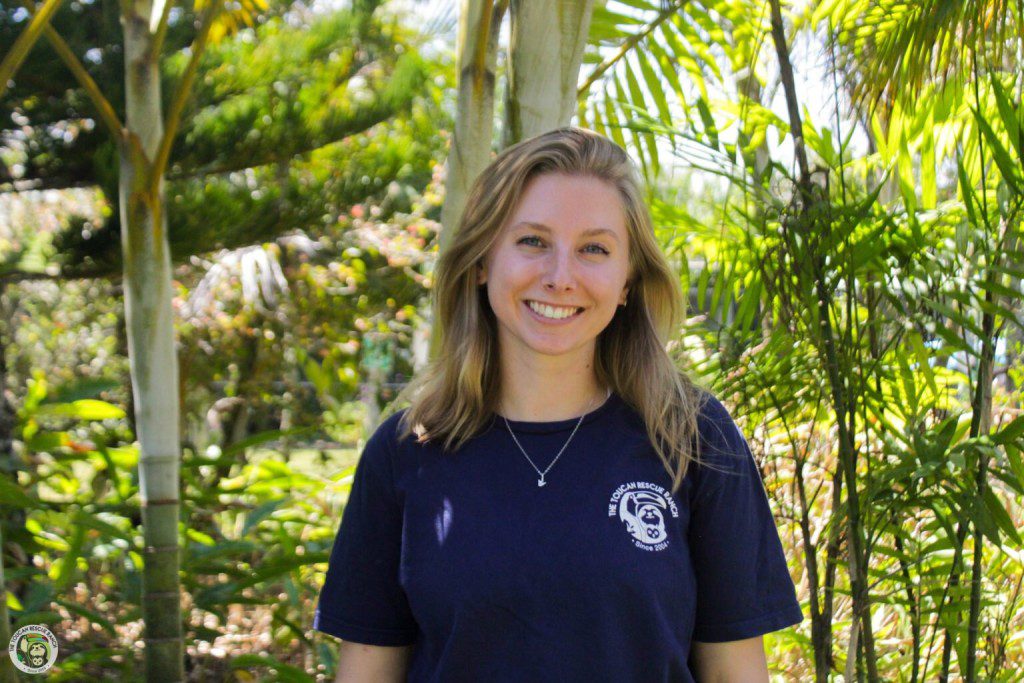
About the Writer:
Laura Berry is the Marketing Assistant at Toucan Rescue Ranch. Her role is to support the Marketing Manager in the creation of marketing and communications materials, such as social media, fundraising campaigns, email marketing, and media content.
Laura, originally from Douglassville, Pennsylvania, graduated from Millersville University with a Bachelor’s degree in science writing and a minor in Spanish culture studies. She began her current position at Toucan Rescue Ranch after successfully completing a 6-month marketing internship.
Laura is an early-career science communications professional, hoping to one day secure a job with a wildlife nonprofit or scientific journal. Her university studies, which included many writing and publications classes, as well as several levels of biology, led her to work at Hawk Mountain Sanctary, the world’s first refuge for birds of prey. Her employment here fostered her pre-existing passion for birds, which she brought with her to TRR. Laura has been making strides towards launching a bird-banding project called Anillos de Libertad. With this project, she hopes to create better protocols and practices for the birds that are cared for at TRR.


